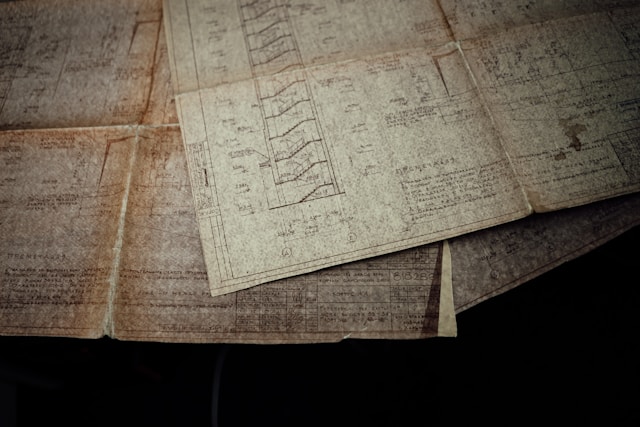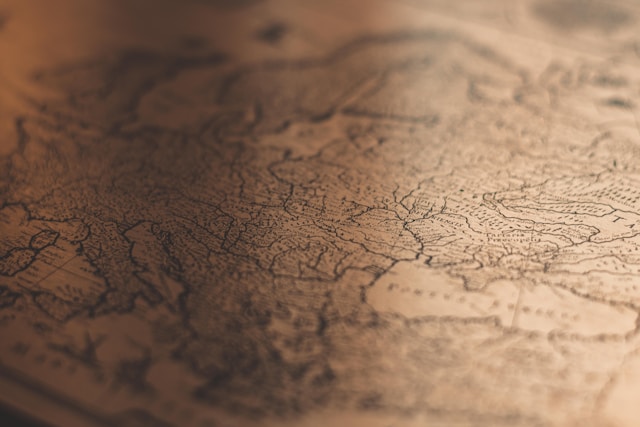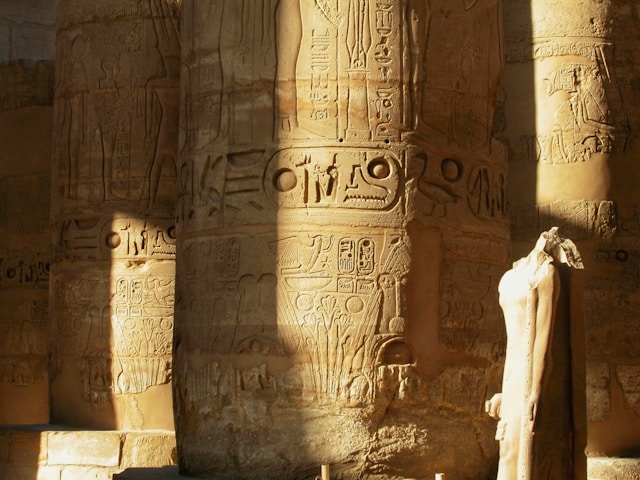Ever looked at an old painting or read something ancient and just wondered, what did things actually look like way back when? It’s easy to focus on the human side of history, right? But there’s this whole other story hidden in there – the story of all the plants and animals that used to be around. Sure, we usually think of fossils and rocks telling us about prehistoric life (and don’t get me wrong, paleontology is super important!), but guess what? There’s another really cool source: old documents. Yeah, it sounds a bit surprising, but things like scrolls, ship logs, maps, and even art can actually give us major clues about the critters and plants living alongside our ancestors.

Think of these old records like little time capsules. They give us these awesome glimpses into ecosystems that are totally gone or have changed like crazy. So, ready to dive in and see how these bits and pieces from the past help us figure out what life was like back in the day?
So, What Kinds of Historical Clues Are We Talking About?
Okay, so when we talk about “historical documentation” for figuring out old biodiversity, what does that actually mean? Well, we’re casting a pretty wide net here. It’s definitely not just about those dusty scrolls you might picture in some ancient library (though, hey, those are gold!). You gotta think broader:
- Written Stuff: Think manuscripts, old history books (chronicles), travel diaries, letters, religious texts, farm records… even old tax papers! Seriously. They might mention local plants and animals, how people hunted, or just what the environment was like.
- Maps and Charts: You know those cool old maps? Sometimes they show forests or coastlines that look nothing like they do now. And occasionally, they even have little drawings of important animals or plants in certain areas.
- Art!: Paintings, carvings, decorations on pottery, mosaics, tapestries – artists back then often included animals and plants. It’s like visual proof of what lived where and when, and sometimes you can even tell what was important to them.
- Ship Logs & Explorer Notes: Those super detailed logs from explorers hitting new lands? They often jotted down notes about weird new species they bumped into, sometimes even trying to sketch them out.
- Digging Up Clues (Archaeology): Now, this isn’t exactly documentation like writing, but stuff found in archaeological digs is super helpful too. Think animal bones tossed away in ancient garbage pits (middens), tiny pollen grains, or even old seeds. These finds give us real physical backup for what the written or visual records suggest. It’s where history meets digging in the dirt – environmental archaeology!
Basically, pretty much any record humans made that happens to mention something about the natural world – whether they meant to or not – can be a piece of this huge puzzle. Stuff like this is the backbone of what’s called historical ecology, helping us rebuild a picture of past environments.

The Power of Ancient Texts: More Than Just Kings and Battles
Can you imagine cracking open an ancient text and finding not just stories about kings and wars, but actual notes about nature? Pretty cool, right? That’s exactly how old writings can give us a window into past ecosystems.

Take ancient Greek and Roman thinkers like Aristotle and Pliny the Elder. These guys wrote about hundreds of species! Okay, so maybe their categories don’t perfectly match how we classify things today, but their descriptions? They give us priceless info about the plants and animals kicking around the Mediterranean thousands of years ago. Even religious texts can pop up with surprising details. The Bible, for instance, mentions all sorts of animals and plants specific to the Middle East, giving us clues about what lived there way back when.
It’s actually pretty amazing what these old scripts can tell us about past life. They can reveal stuff like:
- Where things lived: You know, the historical stomping grounds of certain animals or plants.
- How common they were: Was something everywhere, or was it pretty rare?
- Things going extinct: Sometimes, you’ll read descriptions of creatures that just aren’t around anymore. These texts can hint at when they vanished and maybe even why.
- How people interacted with nature: How did folks use different species? Did they hunt them, farm them, see them as symbols? That kind of thing.
Basically, looking at the environment through these old texts helps us figure out a “starting point” – a baseline – for biodiversity. That way, we have something to compare today’s world against.
Beyond Just Words: Pictures and Physical Clues
But hey, words only tell part of the story, right? Visuals and actual physical stuff add whole other layers. And that’s where archaeology really helps out in figuring out past biodiversity. I mean, digging around can unearth all sorts of cool things:
- Animal bits: Bones, shells, teeth found where people lived? That tells you what they were hunting, raising, or just what critters were hanging around nearby.
- Plant leftovers: Finding old seeds, pollen (that’s palynology, fun fact!), or bits of wood tells you about the plants, what people were farming, and even what they ate.
- Tools and other objects: Finding stuff like fish hooks or stones for grinding grain adds context about how people used specific natural resources.
And then there’s ancient art! It often backs up or adds to what the writings say. Think about those famous Egyptian tomb paintings – they’re full of wildlife from the Nile, like birds, fish, and mammals. Some of those animals aren’t found there anymore, or their populations are way smaller. Roman mosaics? They often showed off exotic animals from all over their empire, which tells us about both biodiversity and trade routes. Sometimes these pictures capture tiny details – like the pattern on a bird’s feathers or the shape of a plant – that you just wouldn’t get from a written description.

How Do They Figure It All Out? The Detective Work
Okay, so how do researchers actually use all these different clues? Well, it’s kind of like being a detective, mixed with some serious science. It takes a mix of different methods to piece things together:
- Checking the Source: You gotta look closely at the document itself. Can we trust it? Was the author actually there? Why did they write it? You know, figure out any biases.
- Word Detective Work: Figuring out exactly what ancient words for plants and animals meant. Names can change over time, or maybe a word was only used in one tiny area. This often means needing experts in old languages.
- Connecting the Dots: This is a big one. Comparing info from lots of different places – texts, art, stuff dug up from the ground, even fossils – helps build a stronger, more complete picture.
- Mapping it Out (GIS): Using mapping software (Geographic Information Systems) to put historical data onto today’s maps. This lets researchers actually see how animal ranges or habitats have changed. Cool, right?
- Building Databases: Gathering all these historical observations into organized databases. This makes it possible to crunch the numbers and spot trends in biodiversity that the records reveal.
Honestly, digging into ancient biodiversity using historical stuff isn’t a one-person job. It usually involves a whole team – historians, archaeologists, language experts, biologists, you name it. Everyone brings their piece of the puzzle.
Why Should We Care? How History Helps Today
So, why does all this matter? Is it just, you know, interesting history stuff? Nope! Understanding past biodiversity isn’t just some academic rabbit hole. These historical records actually have a pretty big impact today, for a few key reasons:
- Figuring Out “Normal”: This historical info helps us get a sense of what ecosystems looked like before humans started making huge changes. That gives us a vital baseline for conservation work and trying to restore habitats today.
- Tracking Extinctions: Old documents can help us pinpoint when certain species vanished, and sometimes even give clues about why. Think about the Dodo! Those old sailor descriptions and drawings were crucial for understanding that lost bird. Unlocking the secrets of extinct species through these old writings is a huge help. We can learn lessons to hopefully prevent it from happening again.
- Seeing the Big Picture: These records let us look past just the recent ups and downs. We can spot long-term changes in animal populations and whole ecosystems, often pushed by things like climate shifts or human actions over centuries.
- Guiding Conservation Today: Knowing where an endangered species used to live can help guide efforts to bring them back or fix up their old homes. Makes sense, right?
- Showing Our Long-Term Footprint: History books, art, and records show just how long humans have been shaping the planet – through farming, hunting, cutting down forests, trading animals. It really highlights that our impact isn’t just a recent thing.
Seriously, you can’t overestimate how important these historical clues are for understanding life’s history and for conservation science today. They give us that crucial human-scale viewpoint that you just don’t always get from looking only at rocks and fossils.
A Few Quick Examples
Want a few quick examples of this in action? Let’s take a look:
- Wild Critters in Medieval England: Old English estate records, history books, and even place names tell us about animals like wolves, beavers, and wild boar that used to roam around but were hunted out centuries ago. These records also give details about what the forests were like and how land was used.
- Life Along the Nile in Ancient Egypt: Those amazing hieroglyphs and tomb paintings? They don’t just show gods and pharaohs. They show the crops Egyptians grew (like specific kinds of wheat and barley), the animals they raised, and loads of wildlife along the Nile. It’s a fantastic snapshot of the plants and animals in that specific spot, way back then.
- Journals of Early Explorers: Think about the super-detailed diaries kept by explorers like Captain Cook or Alexander von Humboldt. They wrote down tons of info about the plants and animals they saw in places Europeans hadn’t really documented before. Their notes became instant baselines, often right before big changes started happening due to colonization.
These examples really bring the past to life, don’t they? They show us buzzing ecosystems and how people fit into them.

Connecting Then and Now
You know, one of the really powerful things we can do with all this historical info is compare it to what we see today. By putting those old accounts side-by-side with modern studies of plants and animals, researchers can actually measure how much biodiversity we’ve lost, see how animal ranges have shifted, and figure out which places seem to be tougher or more fragile. Getting that long view, that historical perspective, is super important for understanding how things have changed and maybe even predicting what might happen next as the environment keeps changing.
Tech Gives History a Boost
And guess what? Modern tech is totally changing the game for digging into this historical data. It’s making things way easier and faster:
- Going Digital: Scanning and typing up huge piles of old documents means researchers anywhere can search them online. No more dusty archives for everything!
- Smart Computers (AI): Yep, artificial intelligence and machine learning can actually be trained to automatically spot mentions of species in tons of text, or even recognize animals and plants in scanned artwork. Pretty amazing, right?
- Fancy Mapping: Those GIS mapping tools we mentioned? They’re getting really sophisticated, allowing for complex models of past landscapes and where species might have lived based on historical clues.
- Sharing Online: There are now online databases where researchers from all over can pool their findings and work together, combining historical biodiversity info from all kinds of sources.
What’s Next? Challenges and Awesome Potential
Okay, let’s be real – using these old records isn’t always easy. It definitely has its challenges. Sometimes the records are biased, or whole chunks of time or places are missing. Info might be spotty, or just plain hard to figure out accurately. Trying to identify a species from an ancient description or a kind of stylized drawing? That takes some serious careful work, you know?
But even with those hurdles, the potential here is just huge. As more and more records get digitized and our ways of analyzing them get smarter, we’re bound to get even cooler insights into prehistoric life and ancient ecosystems. Plus, imagine mixing this historical detective work even more closely with fossil studies and genetics! We’ll definitely uncover more secrets about our planet’s amazing, always-changing tapestry of life.
So, have you ever stumbled across an old description of nature somewhere? It’s kind of wild to think that clues about life from hundreds or even thousands of years ago might just be sitting there in old books or maps, waiting for us to find them. These echoes from the past are a powerful reminder of the incredible natural world we once had, and honestly, why it’s so important to protect what’s still here.
